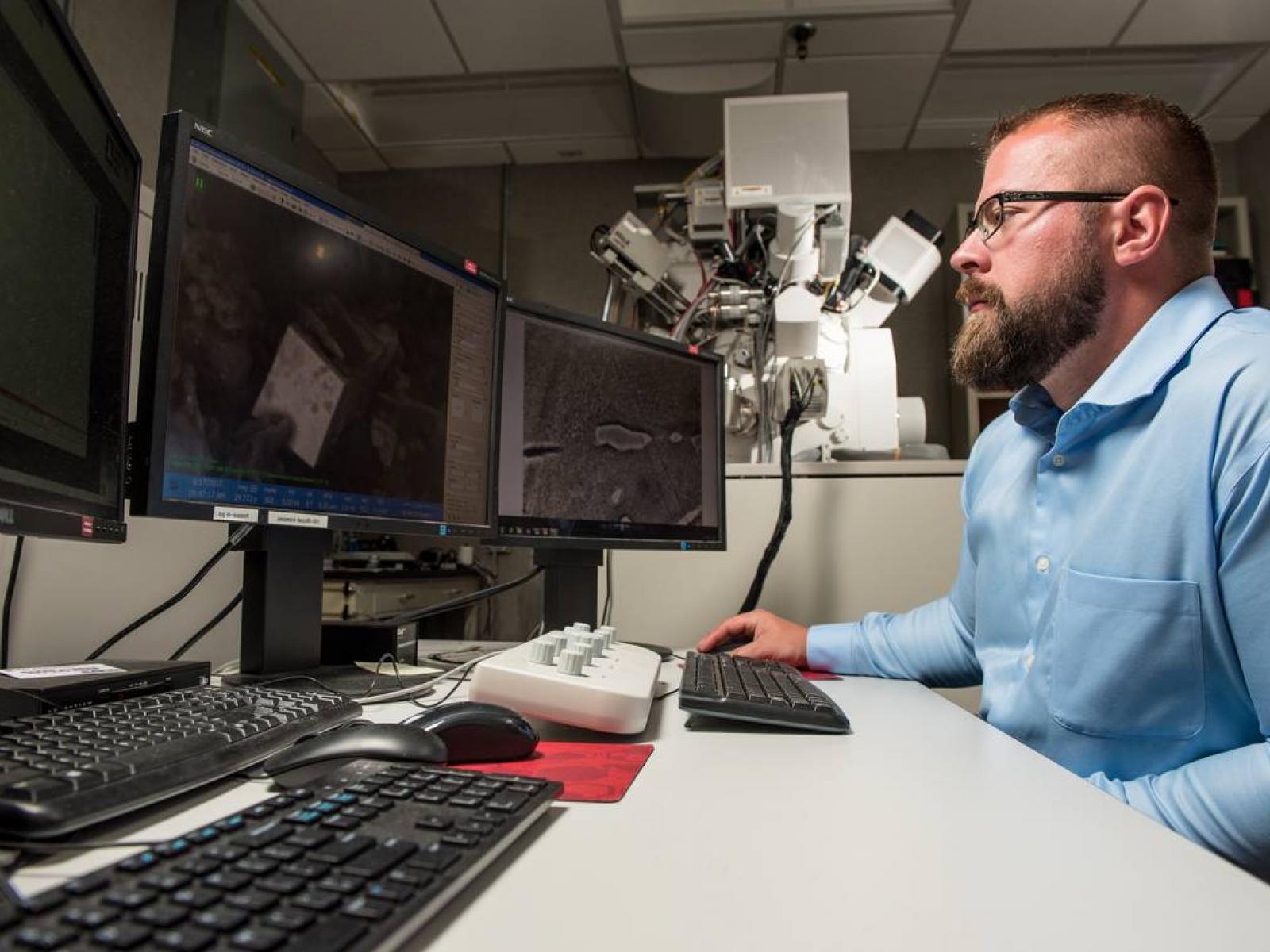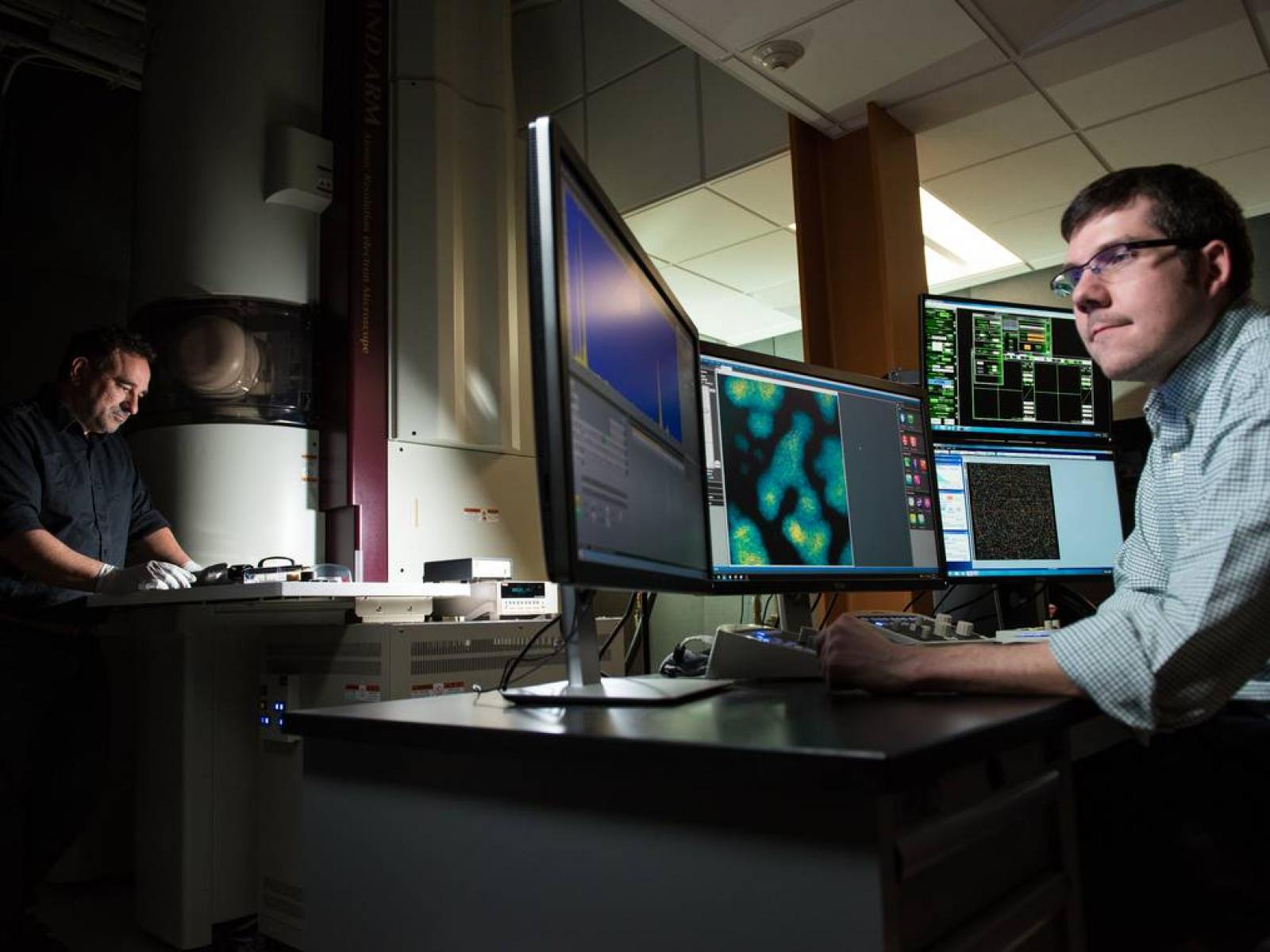Nuclear Science and Engineering is at the Core of PNNL’s Tri-Cities Mission
PNNL got its start more than 50 years ago, supporting the Hanford site under the auspices of the Atomic Energy Commission

PNNL researchers use the Focused Ion Beam (FIB) for micro scale characterization (imaging, elemental analysis, computed tomography, and grain orientation analysis) and preparation of nuclear materials for other analysis including mass spectrometry, transmission electron microscopy, and atom probe tomography
Andrea Starr
Published: May 28, 2019

